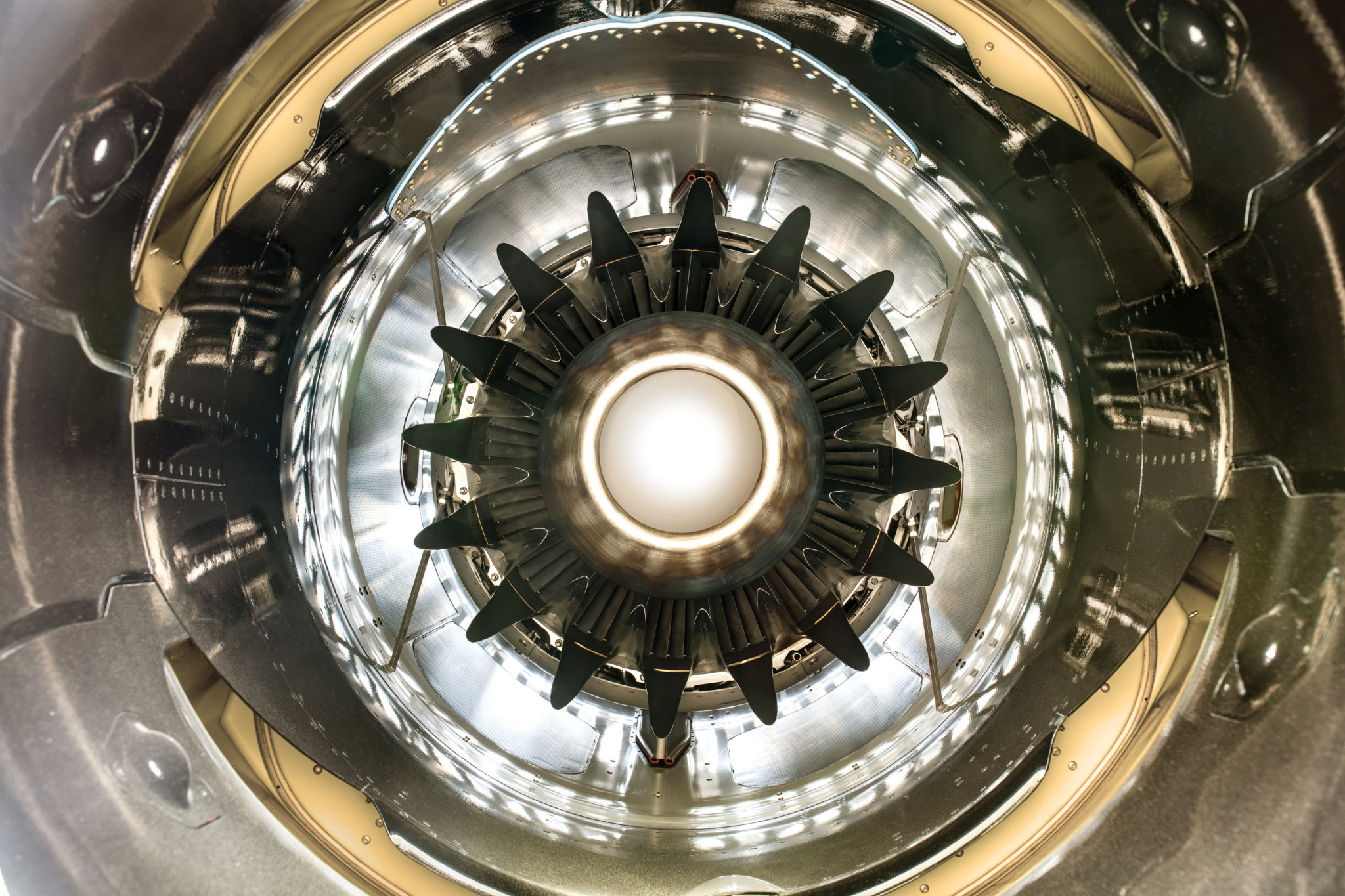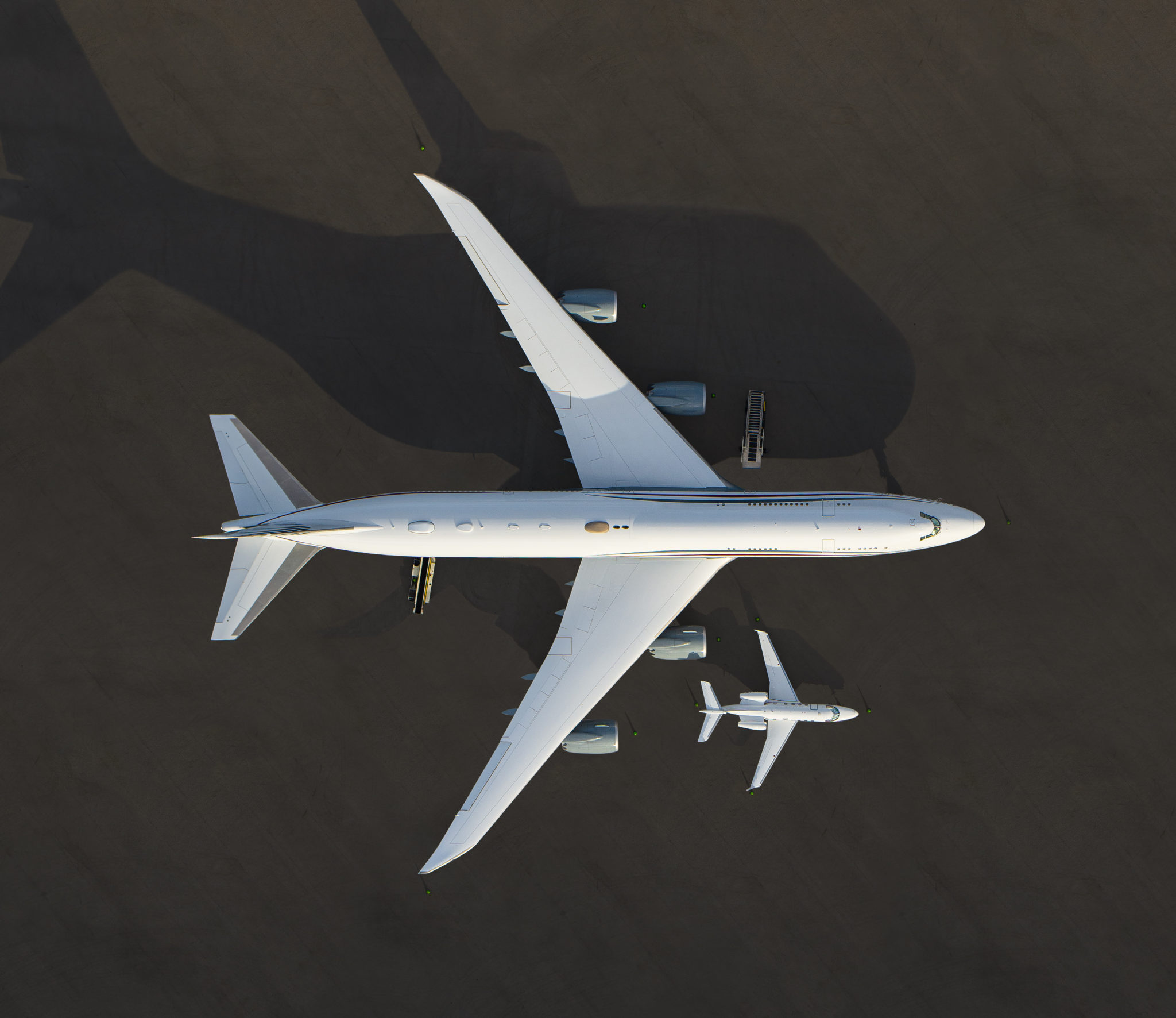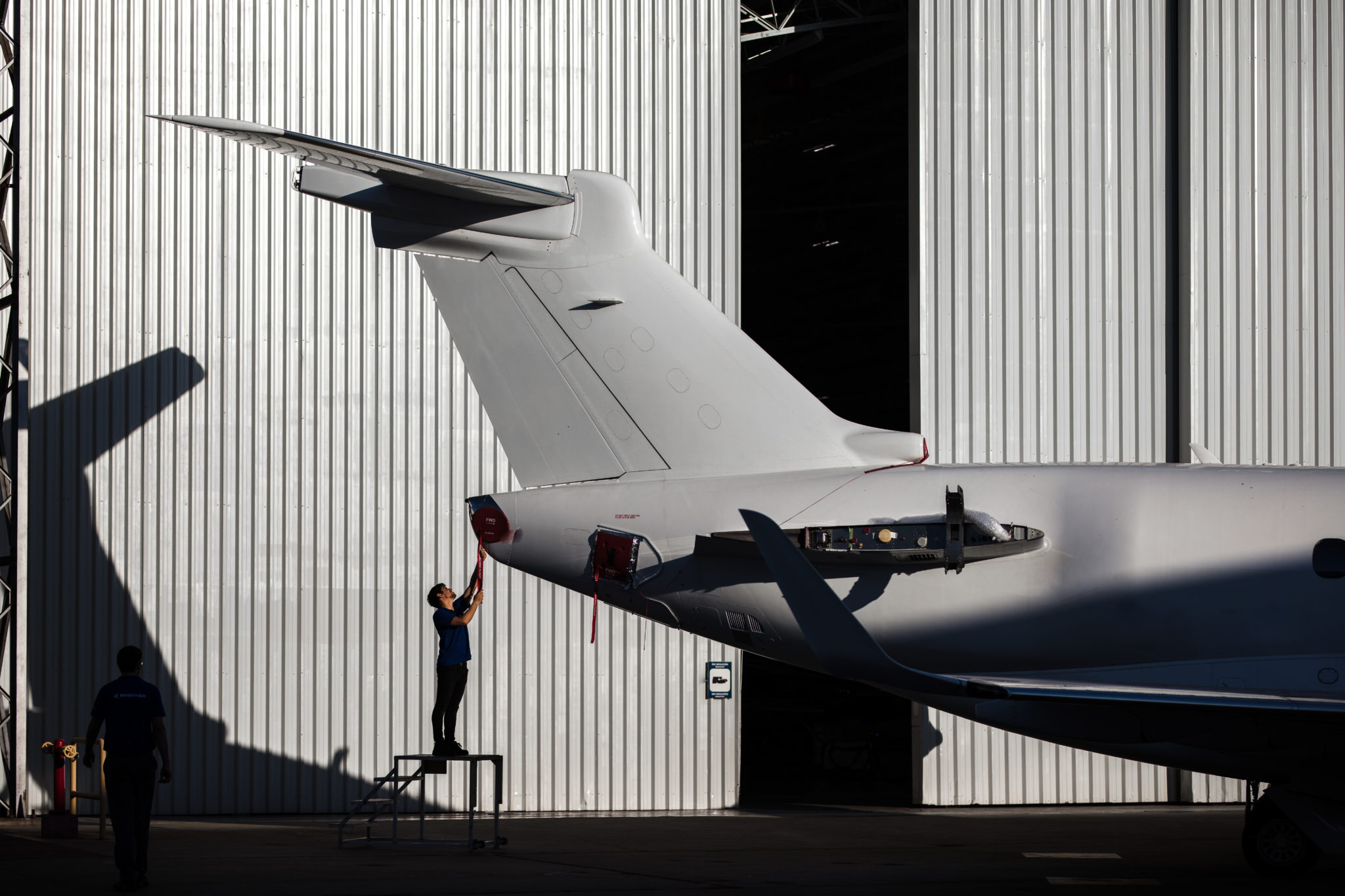December 7th, 2021

Falcon 6X. Courtesy Adrien Daste
To undertake the acquisition of a private jet can be intensive. Currently, 70 percent of the world’s private jets are registered in North America. For the rest of the world, including Americans, securing one will likely be tougher in coming years; those who own them globally are not giving them up, as less than 5 percent of the pre-owned jets worldwide were available for sale as of June 2021, according to AMSTAT, a market research company. This is consistent with the uptick in private business travel at 13 percent between last October and July of this year, reported by aviation research firm WingX.

Dassault Aircraft Services Performing Maintenance on a Falcon Jet’s Pratt & Whitney Engine. Courtesy Dassault Aviation
As far as the make, the world’s top private jet manufacturers include Bombardier, Beechcraft, Cessna, Dassault, Gulfstream and Boeing Business Jets (BBJ), the last of which offers the largest long range fleet today. At a price tag of nearly $400 million, the BBJ 777-8 has a range of 11,645 nautical miles, while the BBJ 777-9 has 11,000 and costs over $425 million. Given low supply and a high initial investment for the heavy cabin category, here is a guide to navigating the process if a private jet is something you are considering to acquire.

Bombardier BD-700 Global Express. Courtesy Matthias Geiger
TRAVEL NEEDS
Jets are not one size fits all. Eric H. Roth, President of International Jet Interiors, says, “When we are introduced to a first time buyer, we start by asking a lot of questions: Why are you interested in buying this particular aircraft? How many years do you anticipate owning it? Are you aware of the costs and downtime related to refurbishing it? What’s a scenario of your average trip?” Founder and President of Par Avion Ltd., Janine K. Iannarelli, points out that it is important for both buyer and broker to understand the parameters they have to work within. For example, first-time buyers might find it easier to scale up to a larger aircraft at a later point than to scale down from one that has a much higher initial investment, according to Jill Plumb, Jet HQ Vice President of Marketing and Sales Management.

Embraer Legacy 500 Engine. Courtesy Adrien Daste
BUYING NEW VERSUS PRE-OWNED
Buying a brand new jet means getting the latest technologies, including sustainable features. Bombardier’s Global 7500 aircraft, for example, is the first business jet to receive an Environmental Product Declaration, which publicizes each aircraft’s environmental footprint throughout the stages of its life cycle. The Global 7500 emits 15 percent less CO2, offers 8 percent better fuel burn and approximately half of the jet’s cabin interior components can be recycled. Similarly, Gulfstream is the first business jet original equipment manufacturer to offer sustainable aviation fuel and carbon offset program to customers.
Still, some consider buying pre-owned from an investment perspective, as new jets depreciate rapidly in the first two years of ownership. “In the pre-owned market, historically, the sweet spot is between about 4 and 10 years old,” says Joseph Carfagna Jr., President of Leading Edge Aviation Solutions, a private aviation consultancy. “For example, a Gulfstream G550 is typically used for about 350 to 400 hours per year. So the 4-year-old aircraft might have 1,400 to 1,600 hours and the 10-year-old one 3,500 to 4,000 hours.” Any older than that means the aircraft needs costly refurbishment, which may not make sense to spend if you are ready to sell.
An impactful perspective of two superlative jet categories–the BBJ 748-8, a long range business jets, and the light Embraer Phenom 300. With a wingspan of 225 feet, Boeing only produced eight of these BBJ 747-8 aircrafts. The Phenom 300, which has a wingspan of just 53 feet, is one of the most produced business jets.

Long Range BBJ 748-8 and Light Embraer Phenom 300. Courtesy Tyler Lorenz
UPGRADE AND MRO
A client of International Jet Interiors purchased his aircraft for $11.2 million, with an additional $1.9 million and 16 weeks of downtime for refurbishment. The aircraft was sold for $13.7 million three years later. As more owners are keeping their jets, the demand for refurbishment and renovations has grown. The decreased available inventory is driving a three percent CAGR in the MRO market (maintenance, repair and overhaul), according to the Business Jet MRO Market Report.
The most common upgrades include implementing the latest technologies wherever possible, such as on-board connectivity, sleeping conveniences, lighting, seats, carpet, ceiling and side panels. It can also be a restyling to match a new car or to incorporate new technology, says Martin Kemp, founder of his eponymous design company.
Any maintenance, repair and overhaul should ideally be done during a scheduled maintenance check of the aircraft “which can utilize the inevitable downtime to an owner’s advantage,” explains Plumb.
With strong demand and low available stock in the private jet market, buyers are seeking fair market value and greater transparency in the sales process, as well as more personal, specific and multitasking features on board.
An upgrade can cost $250,000 to $3 million and take 8 to 20 weeks.

Embraer Legacy 500. Courtesy Adrien Daste
PRIVATE JET SIZE GUIDE
LIGHT
Maximum Flight Hours: 4 HR
High Speed Cruise: 495 MPH
Range: 1,980 Miles (New York-Aspen)
Cabin Length: 17’ | Aircraft Length: 52’ | Passengers: 6
MIDSIZE
Maximum Flight Hours: 7 HR 15 MIN
High Speed Cruise: 495 MPH
Range: 3,540 Miles (New York-Los Angeles)
Cabin Length: 24’ | Aircraft Length: 63’ | Passengers: 8
SUPER MIDSIZE
Maximum Flight Hours: 7 HR 45 MIN
High Speed Cruise: 540 MPH
Range: 4,023 Miles (New York-Paris)
Cabin Length: 28’ | Aircraft Length: 68’ | Passengers: 9
LARGE & HEAVY
Maximum Flight Hours: 8 HR 45 MIN
High Speed Cruise: 540 MPH
Range: 4,563 Miles (New York-Rome)
Cabin Length: 28’+ | Aircraft Length: 68’+ | Passengers: 11
LONG RANGE
Maximum Flight Hours: 16 HR
High Speed Cruise: 590+ MPH
Range: 9,440 Miles (New York-Hong Kong)
Cabin Length: 60’+ | Aircraft Length: 111’ | Passengers: 14






